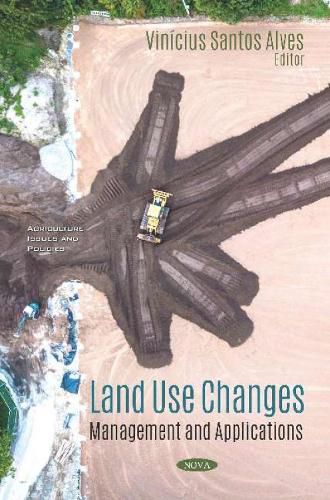Readings Newsletter
Become a Readings Member to make your shopping experience even easier.
Sign in or sign up for free!
You’re not far away from qualifying for FREE standard shipping within Australia
You’ve qualified for FREE standard shipping within Australia
The cart is loading…






Land use is one of the most important aspects of the study of natural resources management and environmental change. Today, recognizing these changes is possible by comparing the differences between images taken in several specified periods in a specific region. The details of these changes are Nunderstandable by mapping the components of land resources into more than one period. Next, agricultural land use in Ukraine is explored. Providing general characteristics of processes in the Ukrainian agrarian sector witnessed over the past two decades, the authors estimate long-term trends and recent changes in agricultural land use and describe their drivers. A framework is provided which addresses sustainable land management through ecosystem services provided by healthy soils. This conceptual tool is designed to support policy makers in the management of five selected soil functions and demands: productivity, water availability, nutrients, carbon sequestration and biodiversity. In the closing study, the authors design a statistical model using atmospheric forcing to predict soil water storage for spring. The analysis of the efficiency of different models takes into account the adjusted squared correlation coefficient and cross-validation coefficient values.
$9.00 standard shipping within Australia
FREE standard shipping within Australia for orders over $100.00
Express & International shipping calculated at checkout
Land use is one of the most important aspects of the study of natural resources management and environmental change. Today, recognizing these changes is possible by comparing the differences between images taken in several specified periods in a specific region. The details of these changes are Nunderstandable by mapping the components of land resources into more than one period. Next, agricultural land use in Ukraine is explored. Providing general characteristics of processes in the Ukrainian agrarian sector witnessed over the past two decades, the authors estimate long-term trends and recent changes in agricultural land use and describe their drivers. A framework is provided which addresses sustainable land management through ecosystem services provided by healthy soils. This conceptual tool is designed to support policy makers in the management of five selected soil functions and demands: productivity, water availability, nutrients, carbon sequestration and biodiversity. In the closing study, the authors design a statistical model using atmospheric forcing to predict soil water storage for spring. The analysis of the efficiency of different models takes into account the adjusted squared correlation coefficient and cross-validation coefficient values.